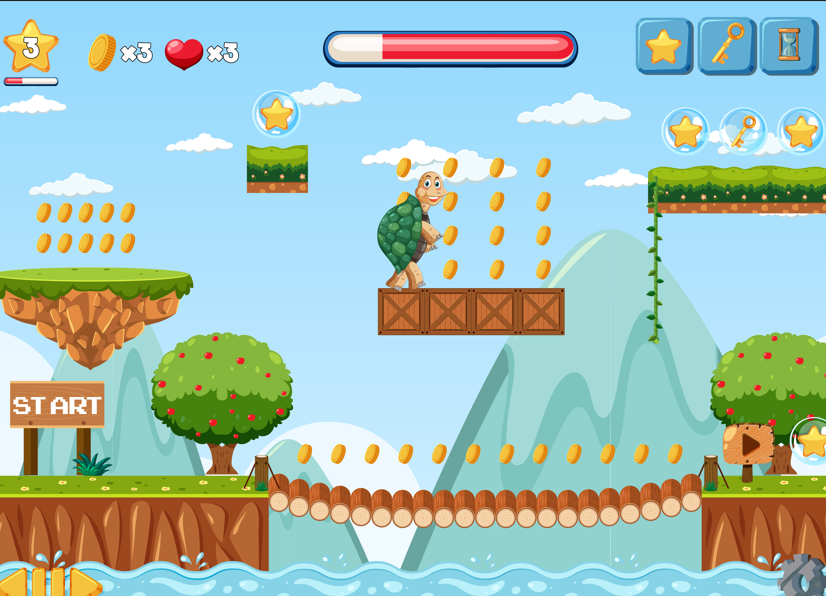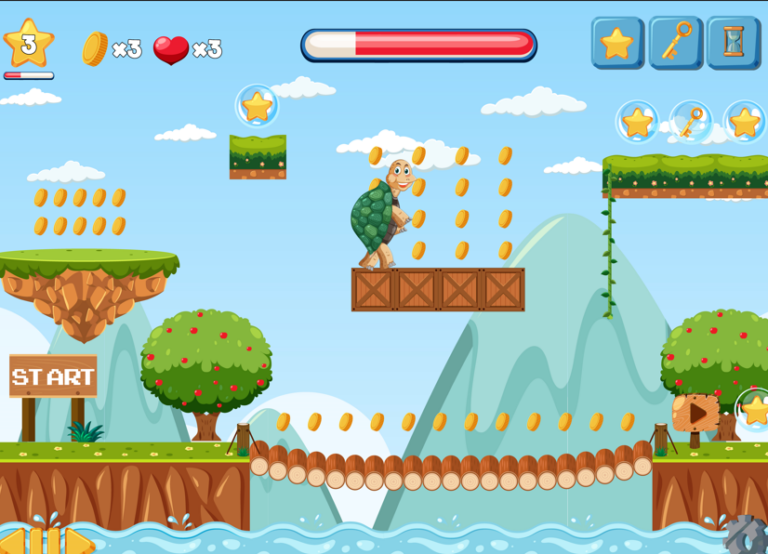In Super Mario 3D World: Bowser’s Fury, Nintendo makes an exciting attempt to combine spontaneity and structure. What starts out as a joyous re-release quickly transforms into something much more avant-garde—a platformer that has literally been freed from its grid. The new location, Lake Lapcat, serves as a living puzzle box. With no loading screens or man-made borders, each island is a part of a vast archipelago. Progress on this single canvas is determined by the player’s curiosity, reflexes, and tactical inventiveness rather than strict levels.
Fury Bowser, a massive, kaiju-inspired monster that interrupts the serene flow of exploration with roaring bursts of chaos, is the experience’s pivotal twist. Fury Bowser interrupts your gameplay in real time, frequently requiring a drastic change in pace, in contrast to conventional boss fights that are limited to their arenas. Instead of being a static threat, he looms—appearing out of nowhere, throwing fireballs that alter the very landscape, and creating shadows. Players are kept on their toes by this mechanic, which rewards both dexterity and flexible problem-solving.
| Attribute | Details |
|---|---|
| Title | Super Mario 3D World + Bowser’s Fury |
| Release Date | February 12, 2021 |
| Developer | Nintendo EPD, Nintendo Software Technology, 1-Up Studio |
| Publisher | Nintendo |
| Platform | Nintendo Switch |
| Genre | 3D Platformer, Action-Adventure |
| Modes | Single-player, Multiplayer |
| Distinct Features | Cat Shines, Plessie traversal, Fury Bowser interruptions, Giga Cat Mario battles |
| Sales (as of March 2024) | 13.47 million units |
| Overall Reception | Highly praised for open-world innovation and design experimentation |
| Source | Nintendo Official Page |
Nintendo created a noticeably better sense of continuity by doing away with the conventional hub layout. The lake itself serves as the unifying element for all of the goals. With Plessie, an aquatic dinosaur whose cheerful disposition and speed add both functionality and charm, navigation comes naturally. Without overwhelming the player with choice paralysis, the traversal mechanics feel incredibly clear and offer seamless access to the game’s 100 Cat Shines.

Every Shine that is gathered changes the terrain, rearranging islands and creating completely new difficulties in the same area. It’s a particularly creative idea that echoes how urban planners adapt constrained space to changing demands. In addition to sustaining interest, this repurposing gives going back a sense of direction. Nintendo encourages mastery without imposing grind by incorporating change into the static.
Additionally, the choice to pair Mario with Bowser Jr. gives the story an uncommon depth. Their partnership involves emotion, much like a father-son pair on a redemption arc. Once a recurrent antagonist, Bowser Jr. turns into a reluctant ally, illustrating a larger pattern in video games and narratives where antagonists change rather than stay the same. Consider characters who enhance plots by switching roles, such as Vegeta in Dragon Ball Z or even Loki in the Marvel movies.
Bowser Jr. is more than just ornamental in terms of gameplay. He acts as an intelligent toolkit that adjusts to player behavior, assisting in battle, unlocking secrets, and storing power-ups. His presence is very helpful in easing the difficulty curve, especially for younger players or newcomers who are not accustomed to Mario’s pace, whether he is controlled by AI or a second player.
Fury Bowser reappears every few minutes. A spooky silhouette emerges from the lake, music swells, and the storm grows darker. It is incredibly immersive and theatrical. Here, a key gameplay element that is both a barrier and an opportunity is something remarkably similar to dynamic weather events in open-world role-playing games. Bowser’s rage breath, for example, has the ability to break down barriers that Mario would otherwise be unable to reach, opening up brief opportunities for advancement that are only available under duress.
As a counterbalance, the Giga Bell turns Mario into a giant warrior who resembles a golden cat. The resulting fights are massive skirmishes that have a more cinematic feel than any Mario battle before. These kaiju moments are so magnificently performed that they evoke battles from Pacific Rim or even Shadow of the Colossus. Beneath the mayhem, however, is a very effective structure: every change and every roar are positioned and timed to build rather than break player momentum.
Although there are frame rate drops during intense scenes when playing the game handheld, the game functions flawlessly in docked mode. These occurrences are a little annoying, but they don’t seriously detract from the gameplay. They serve as a gentle reminder that, despite its extraordinary versatility, the Nintendo Switch has its limitations.
Bowser’s Fury is striking to look at. Though delightfully strange, the cat-themed aesthetic never comes across as forced. Everything appears to be dipped in feline whimsy, including enemies and trees. Although these design decisions may seem amusing at first, they highlight Nintendo’s long-standing philosophy of producing art that is approachable and appealing to all ages. Bowser’s Fury is able to captivate both children and adults because of its unique blend of playfulness and purpose. Seldom does a game appeal to such a wide audience without sacrificing its mechanics.
Bowser’s Fury’s cultural influence extends beyond online gaming communities. Memes, fan art, and design think pieces that examine its structure have all been influenced by it since its release. Bowser’s Fury came at a time when players were looking for solace and escape, but they were also itching for challenge, much like Animal Crossing: New Horizons did during lockdown. It did so with a quiet boldness that didn’t demand attention but certainly earned it, and it did so in a surprisingly affordable manner.
Bowser’s Fury might very well be Nintendo’s conceptual testing ground in the context of gaming as a whole. Its fluid design, flexible pacing, and unrestricted exploration mirror broader changes in the industry, where player agency is seen as a means of expression and sandbox freedom is valued. Nintendo has provided a platform that is both a celebration and a prototype by carefully fusing its legacy mechanics with new systems.
Its narrative even seems to be sensitive to contemporary sensibilities. Bowser Jr.’s role in unintentionally starting the crisis is revealed in the closing credits, adding a sense of consequence that is uncommon in Mario games. Accountability, regret, and a tender lesson about how even lighthearted behavior can have unexpected repercussions are all present—a theme that is subtly poignant for both parents and younger audiences.

8 Comments
That unpredictable rhythm with Fury Bowser showing up unannounced is wild. It shakes up the usual platformer formula. It’s a bit like the musical chaos I explore on Sprunki structured, but with sudden twists that keep you alert. Love it.
The blend of structure and chaos in Lake Lapcat is so creatively done. Makes me want to create something equally dynamic—like what I’ve been playing with on Sprunki Character. Both experiences challenge your creativity in real-time. Total game-changer for Mario.
The way Bowser’s Fury mixes unpredictability with structure—like Fury Bowser suddenly altering the environment—reminds me of experimental fan creations that thrive on dynamic surprises. Projects such as XDemon Sprunki also embrace that balance of chaos and creativity, offering players fresh ways to engage with familiar mechanics while keeping the experience unpredictable and exciting.
Dive into one of the most mysterious and experimental mods in the Sprunki universe — Sprunki Abgerny. This unique creation combines surreal visuals with unpredictable soundscapes, giving players a chance to explore music in entirely new ways. If you enjoy pushing creative boundaries, this mod is a must-try for your next mixing session!
Sprunki: A fan-made mod of Incredibox! You can create music for free, and the horror mode is super cool!
od of Incredibox! You can create m
Get ready to test your endurance in doodle jump 2 , an endlessly fun platformer that never stops pushing your reflexes.
I completely agree with your insights on Bowser’s Fury! The game’s design is indeed captivating, and I appreciate how it manages to engage players of all ages. Speaking of engaging gameplay, I recently tried Geometry Dash, and it’s an absolute blast. The rhythm-based platforming is incredibly addictive, and the community levels are a creative treasure trove. If you haven’t tried it yet, I highly recommend giving it a shot!